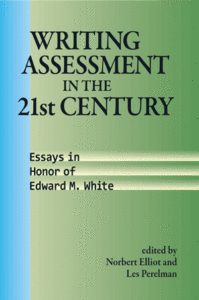Assessment in a Culture of Inquiry: The Story of the National Writing Project’s Analytic Writing Continuum
Excerpt
Teachers, the heart of education, too often find themselves excluded from the very process that policymakers advise should be central to instruction, namely assessment. Across this country, K–12 faculty groups gather regularly for sessions on “data driven” instruction. They pour through pages of statistical materials, and then they go back to their classrooms and do what they’ve always done: the very best they can with the information they have. What’s missing in this picture? We suggest that what’s missing is the teacher’s involvement in assessment in any meaningful way: helping to design it, learning from it, and using it to improve instruction.
This is the story of how teachers thinking together with writing assessment experts helped to create a technically sound and rigorous writing assessment, one that is useful in the classroom as well as in research. The system diminishes the conundrum described by White: that often teachers feel “forced to choose between tailoring their teaching to an impromptu test and helping their students learn to write …” (2007, p. iv). At the center of this story is a cohesive educational community, imbued with a vital inquiry stance, that developed, investigated, refined, and expanded the uses of the assessment system over an extended period of time. The Analytic Writing Continuum (AWC), developed by the National Writing Project (NWP), offers an opportunity to explore the potential of assessment that is locally contextualized yet linked to a common national framework and standards of performance.


